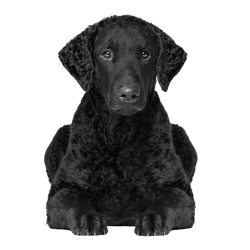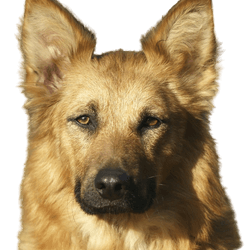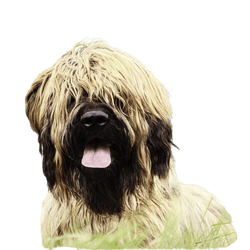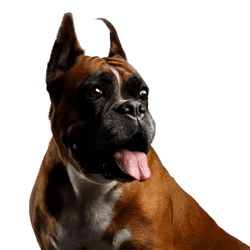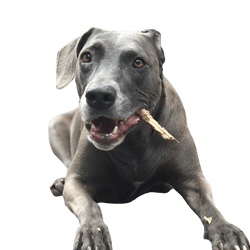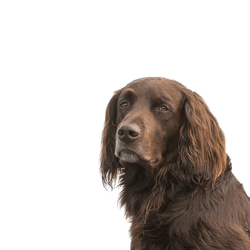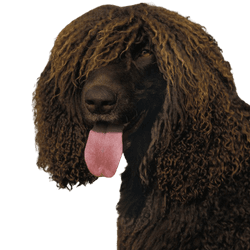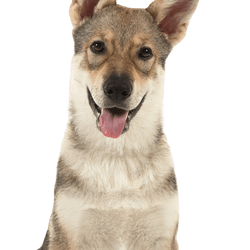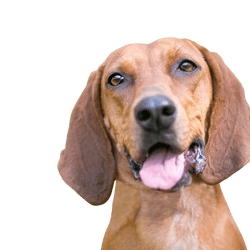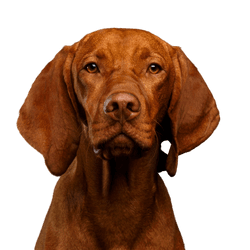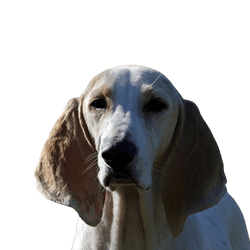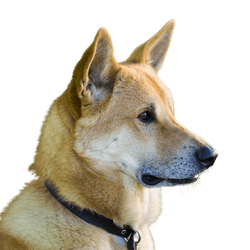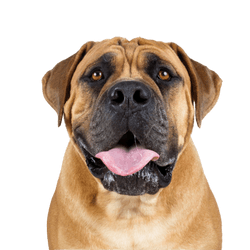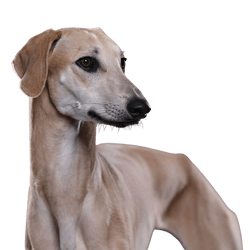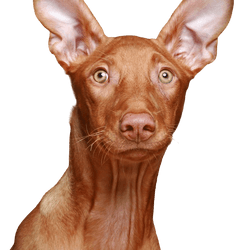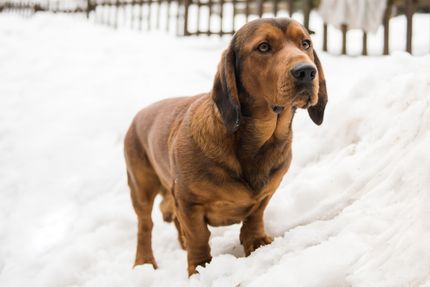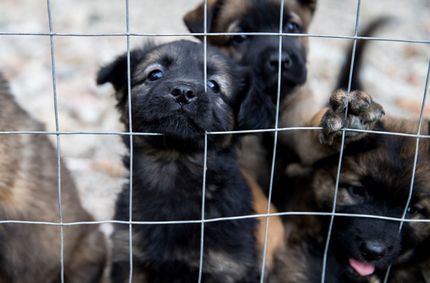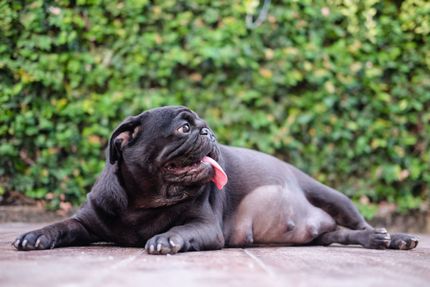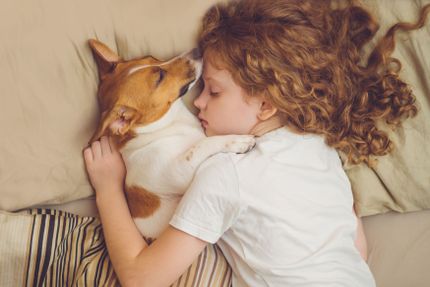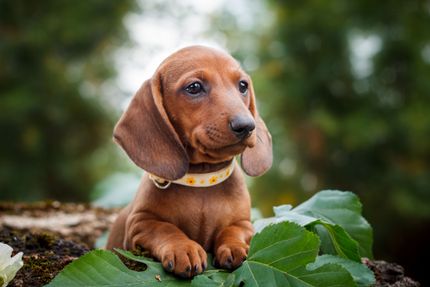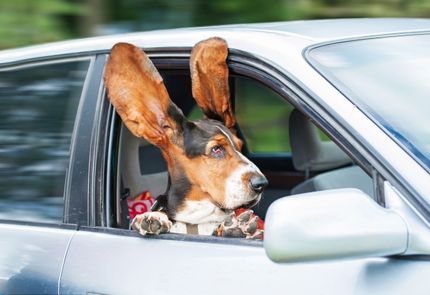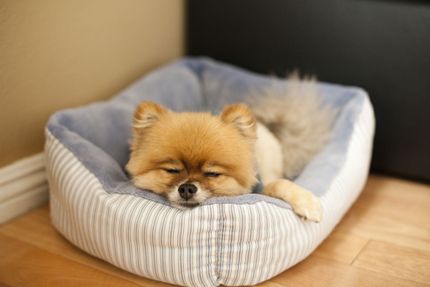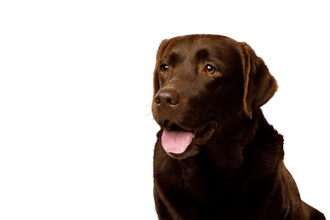
Labrador Retriever Breed description: Character & Co
Labrador Retriever
Facts & Origin
What is the origin of the Labrador Retriever
The history of the Labrador Retriever goes back several centuries. When great sailors like Christopher Columbus sailed the oceans and discovered new continents, they also arrived in Newfoundland on the eastern coast of Canada. The Italian Giovanni Caboto went down in history as its discoverer. Numerous settlers set out to find their fortune in the New World. They brought along Bloodhounds, herding dogs, water dogs and Spaniels. Out of all these breeds the Newfoundland emerged, which developed into two lines. The smaller of them with a muscular build and short coat was especially popular in St. John's. According to tradition this could be the ancestor of the Labrador Retriever. Even back then they were successfully used for hunting. Finally the breed reached Great Britain, where breeding began in the second half of the 19th century. The breed was recognised by the British Kennel Club in 1903, and its name is derived from the island of Labrador, which is located next to Newfoundland. "Retriever" comes from the English word "retrieve", which indicates the excellent retrieving abilities of the animals.
What are the breed characteristics of Labrador Retriever
With a height of 57 centimetres for males and 56 centimetres for bitches measured at the withers, the Labrador Retriever is among the medium-sized dog breeds. They reach a weight of 25 to 26 kilograms. Their body is muscular and compact, their head relatively broad. The high set tail, which tapers towards its tip, is also characteristic for them. This dog is bred in the colours yellow, brown and black. According to the breed standard the animals are supposed to be unicoloured, only a white spot on the chest is allowed. In general, you have the choice between two types: The show type is stronger and heavier, for the "Field Trial Line" slim and sporty animals are mated. They are ideal if you want to go hunting or do dog sports with them.
| Show line | Working line |
|---|---|
| show line | also called: Field Trial Line |
| unicoloured (exception: spot on the chest) | unicoloured (exception: spot on the chest) |
| stronger | slim |
| heavier
|
sporty |
| therapy dogs, family dogs | hunting and dog sports, avalanche dog, etc. |
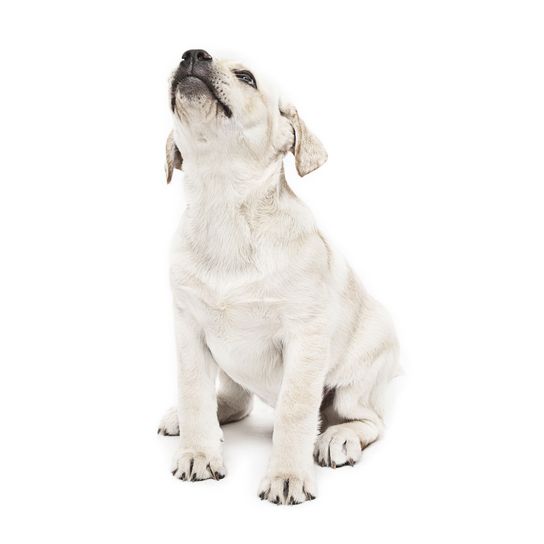
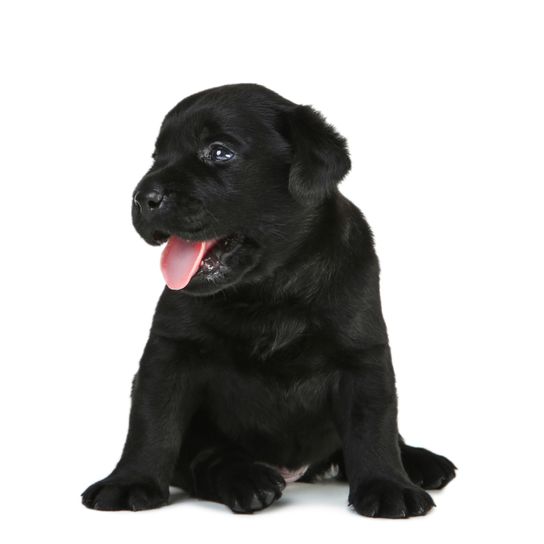
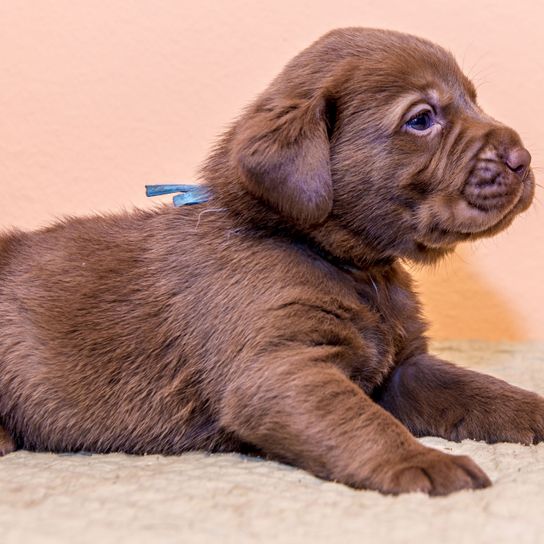
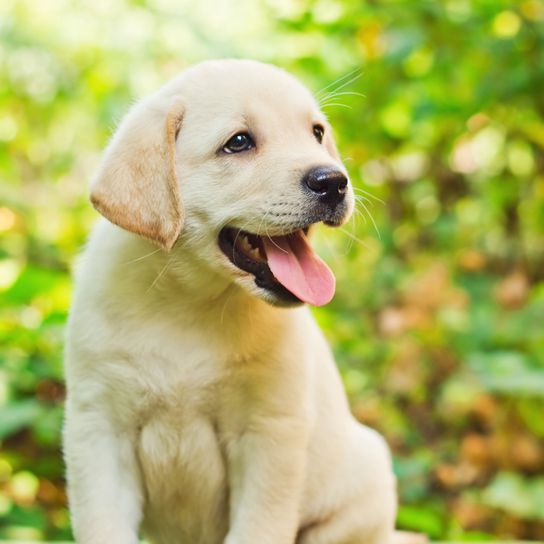
| Alternate Name | Labrador, Lab |
| Origin | UK |
| Life expectancy | 10 - 14 years |
| Care requirements | low-maintenance |
| Activity level | average |
| FCI group | Retrievers |
| AKC group | Sporting Group |
| KC group | Gundog Group |
Labrador Retriever mixes
Attitude, character and temperament of the breed
What are the typical characteristics of Labrador Retrievers
With their distinctive "will to please" the Labrador Retriever win their owners hearts. They will do anything to make you happy, which makes them the perfect family dog. As they always present themselves as patient and calm, they are the perfect playmate for your kids. Due to their distinct character and their clever mind they are perfectly suited as therapy or guide dogs. Labrador Retrievers are known to build a close relationship with their owners. They like to be a part of everything you do and participate in outdoor activities with great enthusiasm. Since they used to be working dogs, they need a sufficient amount of exercise and stimulation. Thanks to their playfulness, they tirelessly like to retrieve balls and are interested in various dog sports.
The show line is not as willing to work as the working line, but it is also very robust and therefore very suitable as a therapy dog. They are tough, not very sensitive and also good watchdogs and protectors. The working dogs want to give in to their work instinct constantly and expect a lot of mental stimulation. They are also very well suited as avalanche dogs etc.
Character
Usage
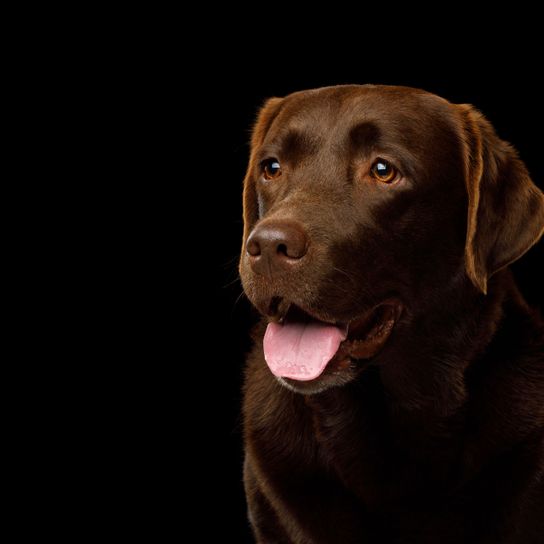
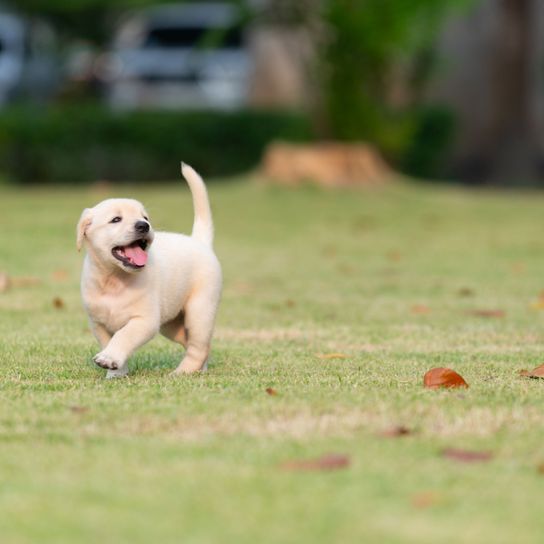
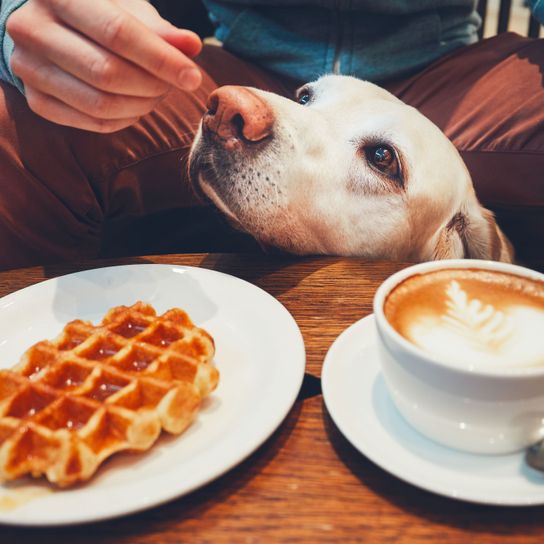
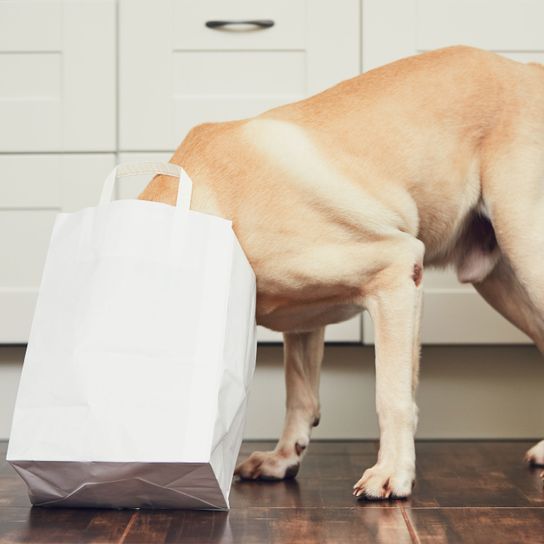

Health and breeding information
What are typical diseases of Labrador Retriever?
Some breed typical illnesses can cause problems for these animals:
- Hip joint dysplasia
- Elbow dysplasia
- Joint damage such as osteochondrosis dissecans
- Eye Disease Progressive Retinal Atrophy
Especially because of the tendency to develop joint diseases you should keep an eye on your family member not becoming overweight. Every excess kilogram puts a strain on the entire musculoskeletal system. Also, it is better not to let your Labrador puppy climb stairs and make sure that they don't overexercise.
What should be considered in regards to Labrador breeding?
In a responsible Labrador breeding only healthy parents are mated with each other. It is best to get a confirmation from the breeder that there is no risk for HD. It is also worthwhile to take a look at the mother and father of your little puppy. A Labrador puppy costs between 1500-2000 Euros. Special colours like charcoal, white etc. or hybrids with poodles can cost more than 2000 Euros. When buying your Labby puppy, make sure that it is healthy and that their papers don't mention any hereditary diseases. Do not decide on a puppy by only judging them by which colour you'd prefer.


Appearance and coat of the Labrador Retriever
The chunky head, a broad chest and muscular body are trademarks of this breed. Another characteristic is their otter-like tail, which the animal uses to navigate in water. If you want to buy a Labrador, be prepared for the fact that it sheds a lot of hair twice a year. Under the short top coat there is a dense undercoat, which they lose during the change of coat. Regular brushing keeps your home and clothes clean.
What is the average size of the Labrador Retriever?
Bitches reach a height of 54 to 56 centimetres, males can reach 56 to 57 centimetres in height.
How much does a Labrador retriever weigh
Depending on the type, the dog weighs between 25 and 36 kilograms. However, you should definitely pay attention to their weight development. The Labrador Retriever will eat anything and tends to steal food when unobserved. Always keep your pantry well locked and do not leave any food lying around. The difference lies especially in the two lines: show line and working line. The show line can sometimes weigh up to 50kg.
What is the average age of the Labrador Retriever
If you want to adopt a Labrador from a shelter or get an animal from the breeder, you're choosing a long-term commitment. This dog can reach an age of up to 13 years.
| Fur length | short |
| Fur | flat coated |
| Ear shape | Triangle |
| Tail | lang |
| Anatomy | rugged, massive |
| Size ♀ | 55 - 60 cm |
| Weight ♀ | 25 - 32 kg |
| Size ♂ | 57 - 63 cm |
| Weight ♂ | 29 - 32 kg |
| Suitable For | Beginner, Blind people, Children, Seniors |
Colors

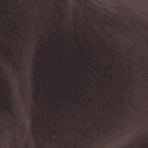
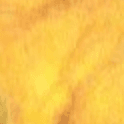
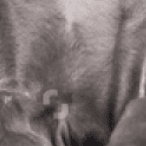
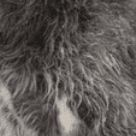
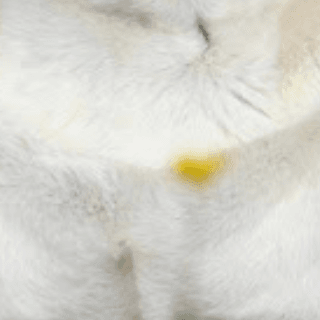
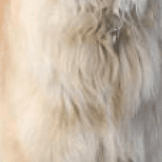

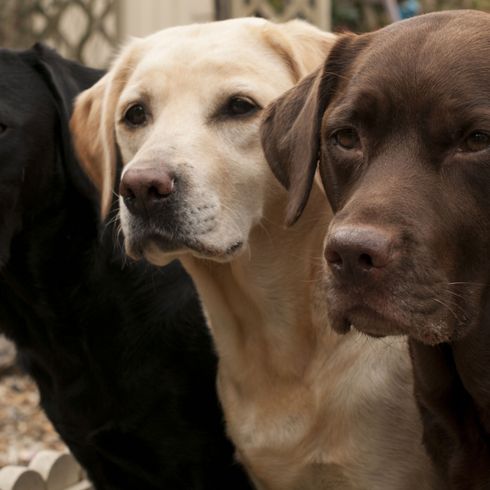
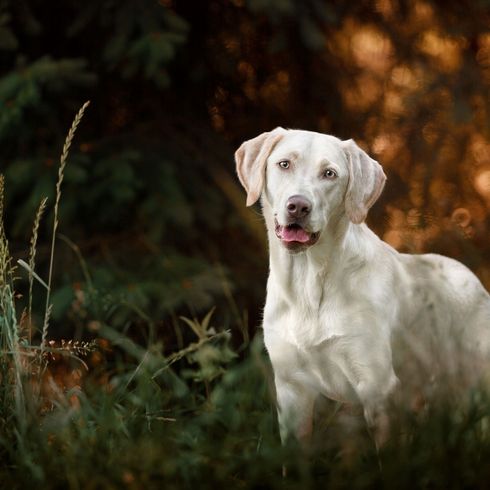
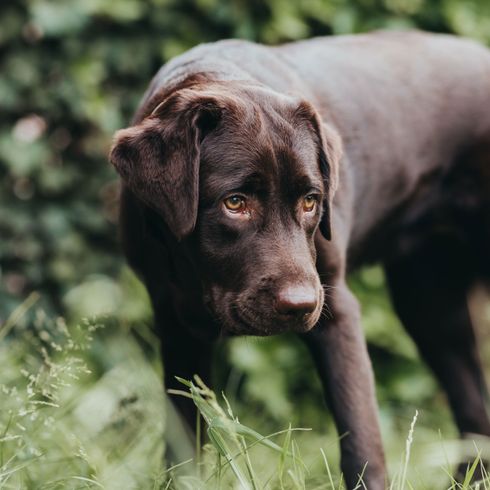
Known Diseases
Eye diseases
Often occur with allergies and intolerances.
Elbow dysplasia (ED)
Elbow joint dysplasia is a chronic disease complex of the elbow joint of fast growing dog breeds.
Joint damage
In some breeds, joint damage can occur later in life, affecting the musculoskeletal system.
Hip dysplasia (HD)
The hip dysplasia or hip joint dysplasia of the dog (HD) is a maldevelopment of the hip joint.
Overweight
Often, unfortunately, the dogs very much under excess weight. But the dogs themselves are never to blame!
FAQ
-
A Labrador is suitable for very many people and groups. He is a family dog as well as suitable for use as a working dog, police dog, guide dog and therapy dog. Originally he is a hunting dog and in addition he is considered a water dog.
-
No. The correct and long name is Labrador Retriever. In the vernacular, it is called simply Labrador.
-
A Labrador Retriever is not considered dangerous or aggressive.
-
A Labrador costs about 2500 Euro, depending on colouring and breeding.
Sources and relevant links
Serpell, James (1995). The Domestic Dog: its Evolution, Behavior and Interactions With People. Cambridge University Press.
FCI Labrador Retriever
Accessed on 01.12.2022
The Labradorclub
Accessed on 30.11.2022
Will to please: Foxik
Accessed on 01.12.2022
Kennel Club Labrador Retriever
Accessed on 01.12.2022
AKC Labrador Retriever
Accessed on 28.12.2022
Embark
Accessed on 24.01.2023
Other large dogs
Useful Articles
You can find articles that might interest you in the dogbible blog to match your favorite breed.
Visit our magazineto stay up to date on dog trends.
To find out more, view our Privacy Policy
Find here the breed that suits you and find out what character traits it has. Here you can also learn more about the origin, size and weight of your favorite breeds.
Matching your favorite breed, you'll find articles that might interest you on the dogbible dog blog.
Riding a bike with the dog - Forbidden?
Hiking holiday with dog - this is what you should keep in mind!
10 hotspots for hiking with dog in Austria
Annual check-up at the vet: you and your dog should be prepared for this






